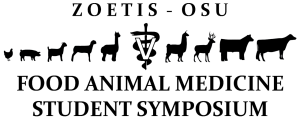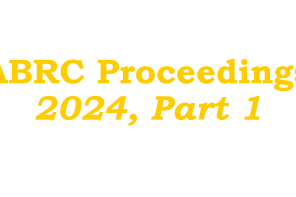By: Clarence Collison
The Queen’s Court
Usually eight or more worker attendants are present when a queen is stationary, but they tend to lose contact as she walks rapidly over the comb.
The honey bee queen is typically surrounded by a small compact group of workers who are attending her. These young workers comprise her royal ‘court’ or ‘retinue.’ They face her, constantly examining her by antennal contact and licking her body surfaces. These attendants are responsible for feeding her royal jelly, grooming her, removing her excreted waste and obtaining and transferring pheromones. This court is only obvious when the queen is standing still on the comb and the attendants are caring for her. Usually eight or more worker attendants are present when a queen is stationary, but they tend to lose contact with her as she walks rapidly over the comb (Free 1987).
Adult queens are fed by workers of brood food producing age and presumably receive mostly royal jelly, possibly with some additional honey (Allen 1955, 1960; Haydak 1970). Within a colony, a queen rarely, if ever, feeds herself. The amount the queen is fed by adult workers in her court is related to the queen’s egg laying rate. As the colony grows, the egg laying rate increases, and the queen is fed more often and for a longer duration (Chauvin 1956; Allen 1960). A queen will lay as few as two or as many as 26 eggs between feedings, and is generally fed by only one worker between each period of egg laying, although up to five workers in succession have been seen to feed queens (Allen 1955; Winston 1987).
The ages of the attendants of a honey bee queen, and the time spent feeding her, were observed (Allen 1955). The colony was in a three-frame observation hive, which resulted in the rate of egg-laying of the queen being restricted (mean 504 eggs per day). At first the mean number of feeds was 4.8 per hour, but after swarm preparations had commenced the number of feeds declined. Usually only one or two bees (maximum five) supplied the queen with food between each period of egg-laying. The egg-production between successive feeds was observed. The ages of the bees which examined the queen with their antennae varied between a few hours and 36 days. A smaller number of bees, from one to 30 days old, licked the queen. Bees from one to 11 days old fed the queen. The mean age of bees feeding the queen was significantly reduced after the construction of queen cells had started. The duration of each feed was 47 ± 2.6 seconds. There was no obvious relationship between the age of the workers and the duration of feeds.
The amount the queen is fed by adult workers in her court is related to the queen’s egg laying rate.
Allen (1960) observed and marked 196 workers that were seen to examine the queen and the durations of their visits were recorded. All gradations of behavior varying from an apparent desire to avoid the queen to a strong desire to remain with her were found. The behavior of individual bees varied on different visits, but no regular sequence was found. More than half of the total number of visits had a duration of 30 seconds or less while the remainder were longer than 30 seconds, with a maximum of 41 minutes. About eight per cent, of the visits were very short and terminated abruptly and with signs of alarm, but no reason for this type of behavior was apparent. The ages of the attendants varied from a few hours to 52 days but no obvious difference in age-distribution between the attendants remaining for very short periods and those remaining for longer periods was found. In relation to the total numbers of marked bees of different ages present, the proportion of workers acting as attendants showed no systematic variations, although in a colony where the average age was low (as in Summer) the actual numbers of young attendants would apparently greatly exceed those of the older ones. The age-range of attendants licking the queen was similar to the overall age-range of the attendants. The ages of the attendants feeding the queen in two colonies ranged from one day to 23 days. No bee was seen to feed the queen during the day of its emergence, although the greatest numbers recorded occurred in the next few days of adult life. No systematic changes were apparent in the duration of feeds given by bees of different ages, the mean value for two colonies being 44 seconds. Observations made during the season of active brood-rearing up to swarming time (April-July) showed that the number and duration of feeds supplied to the queen tended to rise until two to three weeks before the swarm left but in this latter period both number and duration decreased, approximately from the time that queen cell formation started. Thus the queen received gradually diminishing quantities of food in the period of swarm preparation. Egg-production over the same period showed a similar trend. Queens typically lose weight when a colony is preparing to swarm so that they will be able to fly when the swarm leaves the hive (Morse et al. 1966).
The activity of a honey bee queen affected both the number of her attendants and the proportion licking her (Allen 1957). The mean number attending the queen in the summer was six while she was moving over the comb, eight when laying eggs, and 10 when stationary. During the Summer one out of 89 attendants licked the queen while she was moving, compared with one out of 24 while egg-laying and one out of nine when stationary. There was no appreciable change in the number of attendants after swarm preparations had started, or in the proportion of attendants licking and examining the queen. Less interest was shown in the queen during the Winter period, and at this time she was only occasionally licked.
Specific queen pheromones have been shown to be effective in several aspects of physiology and behavior of worker bees including her attractiveness and formation of the court. The responses of workers to the queen change as the queen ages. De Hazen et al. (1989) developed several bioassays to test the attractiveness of Italian queens, parts of queens and pheromone extracts. After introducing a live intact queen or other test materials, observations of attendants were made every 15 minutes for several hours. When queen body parts were introduced into a hive or observation hive, the number of workers surrounding the head, thorax and abdomen were counted. Pheromone extracts were deposited on filter paper and after drying were placed in the hive and numbers of workers that antennated the filter papers were counted.
Observations on the effect of queen age on attractiveness demonstrated three levels of attractiveness. The older the queen, the more attractive she became. One-day-old queens attracted practically no workers. There was a jump in attractiveness for two-, three- and four-day-old queens. The highest level of attraction was attained in queens aged five days old and older with the attractiveness of five-day-old queens being equal to that of queens 18 months old. These observations were correlated with changes in mandibular gland ultrastructure (source of queen mandibular pheromone) (De Hazen et al. 1989).
The distribution of attending workers around the head, abdomen and thorax showed that the abdomen is more attractive than the head and the head is more attractive than the thorax. When the data are normalized by consideration of the exposed surface area of these body parts, the attractiveness per unit of surface area is greatest at the head. Mandibular gland extracts showed greater attraction than extracts of the abdominal tip or tergal (from the dorsal surface of the abdominal segments) secretions (De Hazen et al. 1989).
Queen honey bees are attractive to their workers, due partially to the pheromonal bouquet they secrete. Queen mandibular gland pheromone is a powerful attractant to worker honey bees but it is not solely responsible for eliciting retinue behavior. The attractiveness of virgin queen tergal gland secretions and queen mandibular pheromone to worker honey bees was tested using a retinue bioassay. The number of workers attending the treated pseudoqueen lures was videorecorded in order to allow for the quantification of attractiveness. Queen mandibular gland secretions were more attractive than tergal gland secretions and both queen tergal gland secretions and mandibular gland secretions were significantly more attractive than the control treatment. This laboratory bioassay indicates that queen tergal gland secretions have a releaser effect that evokes retinue behavior from worker honey bees (Wossler and Crewe 1999).
Pheromones from several glandular sources are involved in the formation of the queen’s court. The mandibular gland mixture (Queen Mandibular Pheromone, QMP) alone does not result in queen retinue behavior. A second source of pheromone (Queen Retinue Pheromone, QRP) serves to attract workers to her and to form the retinue around the queen (Caron and Connor 2013). Queen mandibular pheromone is composed of five active components: 9-oxo-2-decenoic acid (9-ODA), both enantiomers of 9-hydroxy-2-(E)-decenoic acid (9-HDA), methyl p-hydroxybenzoate (HOB) and 4-hydroy-3-methoxyphenylethanol (HVA). Four additional chemical components have been identified from several glandular sources that account for the majority of the difference in retinue attraction between synthetic QMP and queen extract: methyl (Z)-octadec-9-enoate (methyl oleate), (E)-3-(4-hydroxy-3-methoxyphenyl)-prop-2-en-1-ol (coniferyl alcohol), hexadecan-1-ol and (Z9,Z12,Z15)-octadeca-9,12,15-trienoic acid (linolenic acid). These compounds were inactive alone or in combination, and they only elicited attraction in the presence of QMP. There was still unidentified activity remaining in the queen extract. The queen therefore produces a synergistic, multi-glandular pheromone blend of at least nine compounds for retinue attraction, the most complex pheromone blend known for inducing a single behavior in any organism (Keeling et al. 2003).
Observations provided strong circumstantial evidence that workers in a queen’s court obtain queen pheromone on their antennae, and that queen pheromone is distributed through the colony during antennal contact between workers (Ferguson and Free 1980). Workers that had just left the court of a mated or virgin queen had an increased tendency to make reciprocated antennal contacts with other workers. This tendency was reinforced when the workers concerned licked the queen in addition to palpating her with their antennae, probably because they spent longer in the court. The first workers contacted by those leaving the court also had an increased tendency to make reciprocated antennal contacts. Antennal contacts were more likely to be initiated by bees other than those from the queen’s court. Workers from the court and those they first contacted, participated in food transfer more than did workers selected at random. Workers that licked a virgin queen subsequently participated in food transfer more than those that palpated her with their antennae only. Within about five minutes of leaving the court, a worker’s participation in reciprocated antennal contacts and in food transfer diminished to the level of non-court workers. Workers chosen at random made more transient and non-reciprocated antennal contacts when in a colony with a mated queen than when in a colony with a virgin queen.
Queen attendance behavior of workers from selected honey bee colonies with high and low worker retinue response to synthetic queen mandibular gland pheromone (QMP) was investigated. Antennating, licking, grooming, and feeding of the queen by workers from high and low responding colonies were examined. High and low QMP responding workers did not attend the queen differently. However, workers originating from different colonies antennated and licked the queen more frequently than others, suggesting there may be a genetic basis for queen attendance behavior not necessarily associated with response to QMP. The median age of queen attendance was independent of strain (Pankiw et al. 1995).
A worker-queen contact in the retinue of the honey bee enables transfer of queen pheromones to workers. Behaviors of workers attending the queen and post-contact behaviors were recorded (Kralj and Bozic 2001). The most commonly observed activities of workers in retinue were licking and antennating the queen. Those activities were interrupted with bouts of self-grooming, which was the most frequently observed activity of licking attendants. Naumann (1991) showed that self-grooming results in the translocation of queen mandibular pheromone from the mouthparts and head to the abdomen of the workers. Immediately after leaving, the queen, workers which had licked the queen, self-groomed longer and more frequently than workers which had antennated the queen. Licking post-retinue workers walked significantly faster and rested less frequently than palpating post-retinue workers, which suggest that licking attendants are most effective in the pheromone transfer accomplished by accidental encounters with other nestmates (Kralj and Bozic 2001).
Honey bee queen attendants disperse queen pheromones to supplement pheromone dispersal by direct queen-worker contacts. With time they lose their dispersal function exponentially due mainly to volatilization of queen pheromones carried on their bodies. The elimination of those airborne pheromones together with the air while ventilating the hive is balanced by pheromone release by the queen. This equilibrium results in a certain level of queen pheromones in the brood nest. The change of the pheromone level (for example, due to colony loss of its queen) can serve as a signal to alter the behavior of the workers and the state of the colony (Juška et al. 1981).
A worker bee from a queenless group of workers shows a variety of behavior types when she encounters a queen. This consists of avoidance and aggression, offering food, feeding and retinue behavior and finally negligence. Although most changes of one behavior into another occur randomly, the overall pattern can be divided into an initial phase in which avoidance and aggression are frequently observed, a second phase characterized by feeding and retinue behavior and a final phase in which negligence of the queen dominates. When back into her group of queenless workers, this bee functions as a substitute queen by attracting the attention of the others, which show principally the same behavior types to her. This attractiveness of the substitute queen is due to mandibular gland substances from the queen, adhering to her body. Food exchange between the substitute queen and her attendants is mainly directed to the substitute queen. Feeding by the substitute queen is almost always related to the occurrence of aggression towards her. This is opposite to what might be expected when food exchange would be the mechanism by which information about the presence of the queen is distributed among colony members. When a queen is deprived of her mandibular glands she evokes the same behavior types in an encountered bee, but the frequency of negligence is higher, whereas feeding and retinue formation occur less frequently. When back in her group of workers this bee hardly functions as a substitute queen, since she is almost treated as an arbitrary bee. Both the attractiveness of the returned worker and the direction of food exchange indicate that sensory perception by means of the antennae of queen mandibular pheromone on the body of the queen or the substitute queen plays a major part in the “queenright” behavior of the bees (Velthuis et al. 1972).
References
-
Allen, M.D. 1955. Observations on honeybees attending their queen. Brit. J. Anim. Behav. 3: 66-69.
-
Allen, M.D. 1957. Observations on honeybees examining and licking their queen. Brit. J. Anim. Behav. 5: 81-84.
-
Allen, M.D. 1960. The honey bee queen and her attendants. Anim. Behav. 8: 201-208.
-
Caron, D.M. and L.J. Connor 2013. Honey Bee Biology And Beekeeping. Wicwas Press, Kalamazoo, MI, 368 pp.
-
Chauvin, R. 1956. Les facteurs qui gouvement la ponte chez la reine des abeilles. Insect. Soc. 3: 499-504.
-
De Hazen, M., Y. Lensky and P. Cassier 1989. Effects of queen honeybee (Apis mellifera L.) aging on her attractiveness to workers. Comp. Biochem. Physiol. 93A: 777-783.
-
Ferguson, A.W. and J.B. Free 1980. Queen pheromone transfer within honeybee colonies. Physiol. Entomol. 5: 359-366.
-
Free, J.B. 1987. Pheromones of Social Bees. Comstock Publishing Associates, Ithaca, NY, 218 pp.
-
Haydak, M.H. 1970. Honey bee nutrition. Ann. Rev. Entomol. 15: 143-156.
-
Juška, A., T.D. Seeley and H.H.W. Velthuis 1981. How honeybee queen attendants become ordinary workers. J. Insect Physiol. 27: 515-519.
-
Keeling, C.I., K.N. Slessor, H.A. Higo and M.L. Winston 2003. New components of the honey bee (Apis mellifera L.) queen retinue pheromone. Proc. Natl. Acad. Sci. USA 100 (8): 4486-4491.
-
Kralj, J. and J. Božič 2001. Activity of attendants after licking and palpating the queen in honeybee (Apis mellifera carnica). Netherlands J. Zool. 51: 415-419.
-
Morse, R.A., E.J. Dyce and R.G. Young 1966. Weight changes by the queen honey bee during swarming. Ann. Entomol. Soc. Am. 59: 772-774.
-
Naumann, K, 1991. Grooming behaviors and the translocation of queen mandibular gland pheromone on worker honey bees (Apis mellifera L.). Apidologie 22: 523-531.
-
Pankiw, T., M.L. Winston and K.N. Slessor 1995. Queen attendance behavior of worker honey bees (Apis mellifera L.) that are high and low responding to queen mandibular pheromone. Insect. Soc. 42: 371-378.
-
Velthuis, H.H.W. 1972. Observations on the transmission of queen substance in the honey bee colony by the attendants of the queen. Behaviour 41: 105-128.
-
Winston, M.L. 1987. The Biology Of The Honey Bee. Harvard University Press, Cambridge, MA, 281 pp.
-
Wossler, T.C. and R.M. Crewe 1999. The releaser effects of the tergal gland secretion of queen honeybees (Apis mellifera). J. Insect Behav. 12: 343-351.










